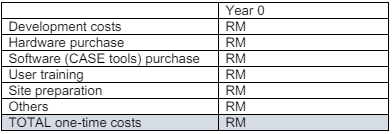- D/618/7406 Unit 5: Challenges of IT Security in Modern Organizations – Risks, Solutions & Best Practices
- HSC Level 2/3 Unit 012 Assignment: Care Worker Responsibilities and Ways of Working
- CIPD Level 5HR03 Assignment: Understanding Reward Approaches and Their Impact on Performance and Contribution
- CIPD level 5HR02 Assignment: Talent Management and Workforce Planning Unit Guide
- Level 3 D/615/3823 Assignment: Regulation, Protection, and Collaborative Practice in Health and Social Care
- PGM216D Assignment: Bicycle Store Sales Management Application
- MATH6033 Assignment: Epidemiological Investigation of Cardiovascular Health and Tea Consumption Risks
- EH6147 Assingment: Stakeholder Analysis for Quality Improvement in Hand Hygiene Compliance
- Assignment: Investigation of Solution Concentration Through Standard Preparation, Titration, and Colorimetry Techniques
- MATH6033 Assignment: Cardiovascular Risk and Tea Drinking: Epidemiological Analyses
- CIPD level 3 3CO03 Assignment: Core behaviours for people professionals
- DAC4B1: Personal development in adult care settings
- Unit 19 Research Project Assignment 1: Impact of Corporate Social Responsibility on Business Success & Community Wellness
- EG5022 Assignment: Georeferencing and Accuracy Assessment of a Quarry 3D Model Using Photogrammetric GCPs
- Assignment: Financial Performance and Strategic Analysis of a UK Listed Company: A CORE Evaluation and Reflective Review
- 5CNMN002W Assignment: Advanced measurement- Major measurement taking off
- K/650/2298 Level 3 Understanding Roles, Responsibilities, and Effective Partnerships in Health and Social Care
- Understanding Information and Knowledge Management in the Workplace: A Briefing for HR Professionals
- HRM7010D Strategic Use of People Analytics in Enhancing Organisational Value and Agility
- TOWN1060 Urban Planning in the UK History Sustainable Design and Future City Development
BDV6223: Business Applications Development, Group Assignment, MMU, UK
| University | Multimedia University (MMU) |
| Subject | BDV6223: Business Applications Development |
Assignment’s Learning Outcomes:
- Propose and pitch system solutions to support business functions in an organisation.
- Identify and explain the approach to system analysis and design.
- Initiate and plan system development project.
- Design and model system requirements.
PART ONE : Foundations for Systems Development
An organizational approach to systems development, particularly the analysis and design of the systems, is driven by established methodologies, techniques and tools. These methodologies, techniques and tools were developed, tested, and widely used to assist those tasked with key responsibilities during the system development various stages.
Choose a relatively small organization or a business that is just beginning to use information systems. In time, the organization has come to realize the powerful competitive advantages associated with the use of information systems.
As of now, the organization are using off-the-shelf software. As much as the off-the-shelf software are proving to be invaluable in supporting the employees in their respective jobs, the organization soon came to the realisation that compromises must be made by the employees in using these software given that these software core features are not customizable to support the organization’s business growth.
Moving forward, as the business continues to grow, the organization is now ready to develop a dedicated specialized management information system (MIS) to support its key business processes. You and your team members are recruited and tasked with the system development project. Most
system development projects find it beneficial to use a standard set of steps, known as systems development methodology, to develop and support information systems.
You and your team members have decided to adopt the systems development life cycle (SDLC). Write a proposal that explains the
importance of adhering to a systems development methodology, and why SDLC is chosen. In your report, provide adequate explanation for the following:
- General limitations of off-the-shelf software that most organizations face that ultimately compels the organization to develop their own MIS.
- In the beginning, some of the team members felt that Agile Methodologies were more suited. Do a comparison between SDLC and Agile Methodologies. Justify in the report why SDLC is deemed more suitable for the organization that is developing an information system for the first time. In
addition, make a case for Agile Methodologies for future projects. - Although SDLC is the fundamental methodology for systems development in many organizations, it does have its limitations. What are the limitations of SDLC which the system development team members and organization will need to be aware of?
Do You Need Assignment of This Question
PART TWO: Planning and Managing the Information System Project
As with most project initiation, numerous activities or tasks must be planned as the project commences. During project planning, the team members are tasked with the following:
- Describe the project scope
The team members have divided the entire project into manageable activities and logically arranges them in order. For each of the activity identified below, explain comprehensively what needs to be done. - Initiation
- System Concept Development
- Planning
- Requirements Analysis
- Logical Design
- Physical design
- Development
- System Testing
- Integration
- Implementation
- Operation and Monitoring
Develop a preliminary schedule
Use the above set of activities and estimate appropriate duration for each activity. These time estimates (in weeks) will then enable you and your team members to set the start and end dates for each activity in the project. The official start date is 8 April 2024.
You are given the liberty to estimate the duration required to complete each activity. However, the organization wants the new system to be completed within a year. As such, the project manager must ensure that the total duration does not exceed 52 weeks.
The project schedule is to be visualised into a (1) Gantt Chart and (2) Network Diagram. In the network diagram, calculate and display the earliest completion time (TE), latest completion time (TL), and highlight activities on the critical path. You are required to plan which activities can be concurrently executed, and which activities must be completed before starting other activities.
Assessing project feasibility During this stage, you and your team members need to create a preliminary budget that outlines the planned expenses (costs) and revenues (benefits) associated with the development and use of the MIS
in the organization over a five-year time period.
Provide estimate monetary amount for the following tangible benefits

Provide estimate monetary amount for the following one-time costs:

Provide estimate monetary amount for the following recurring costs:

Based on the estimated total tangible benefits, total one-time costs and total recurring costs, perform a cost-benefit analysis for this project using a spreadsheet software.
Buy Answer of This Assessment & Raise Your Grades
PART THREE: Determining Systems Requirements
This is the most crucial stage of the project where the requirements of the new system are to be determined. Assuming that you and your team members have conducted interviews with the organization’s top management and selected employees.
Observations were also conducted to study the current workflow and how the current off-the-shelf software are being used by the employees in completing their day-to-day tasks.
You are now ready to list the core features (functions) that will be designed and implemented in the new system.
Write a report to explain the following:
- Describe the information system that you and team members are developing for the organization. For instance, you may be developing an online e-commerce system that will allow the organization to promote and sell its products.
- List and explain each core function to be implemented in the new system. For instance, a typical online e-commerce system will have key functions such as login, register, view products, order, etc.
PART FOUR: Structuring System Process Requirements
You and your team members will be using the data flow diagram (DFD) to model the system processes. The deliverables of this stage are:
- Context DFD
- DFD(s) of the system (decomposed if necessary)
- Succinct description of each DFD component
You are recommended to use the DFD symbols devised by Gane and Sarson (1979).
Are You Looking for Answer of This Assignment or Essay



